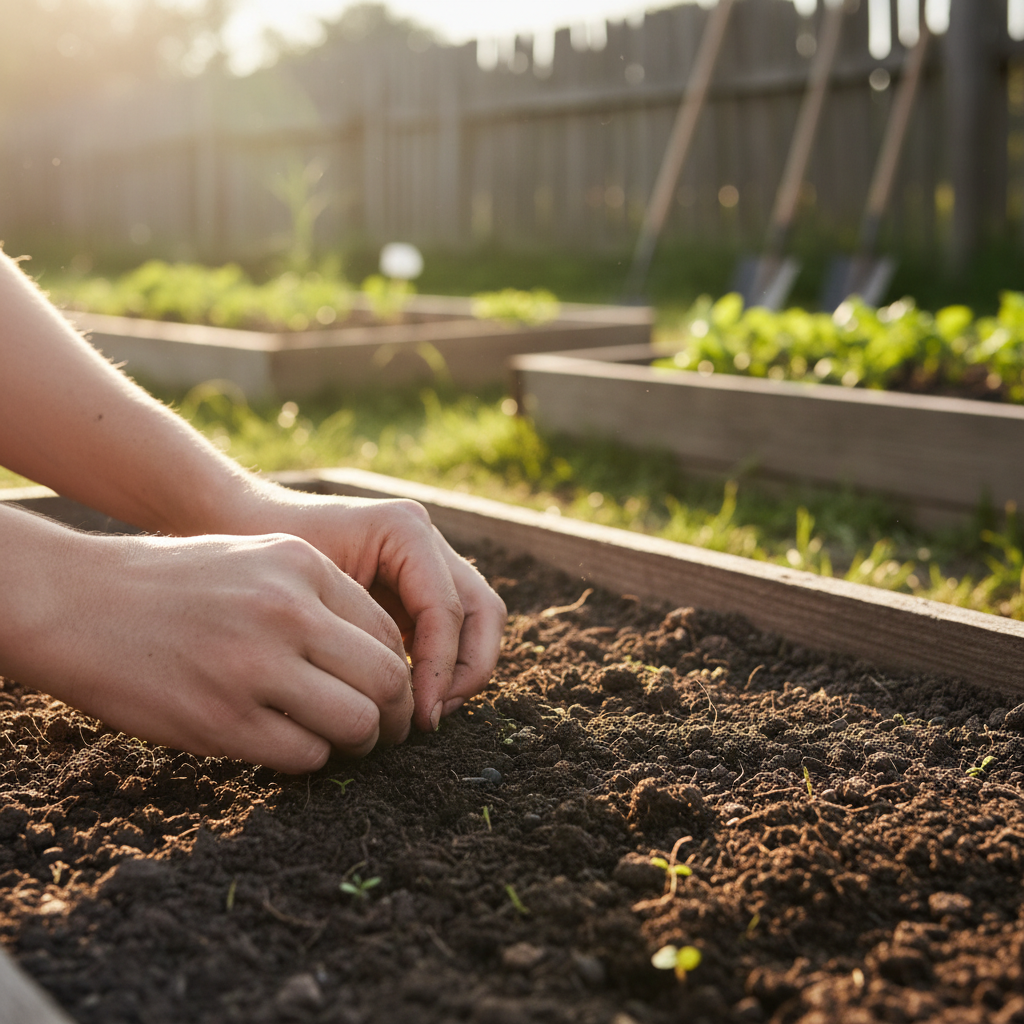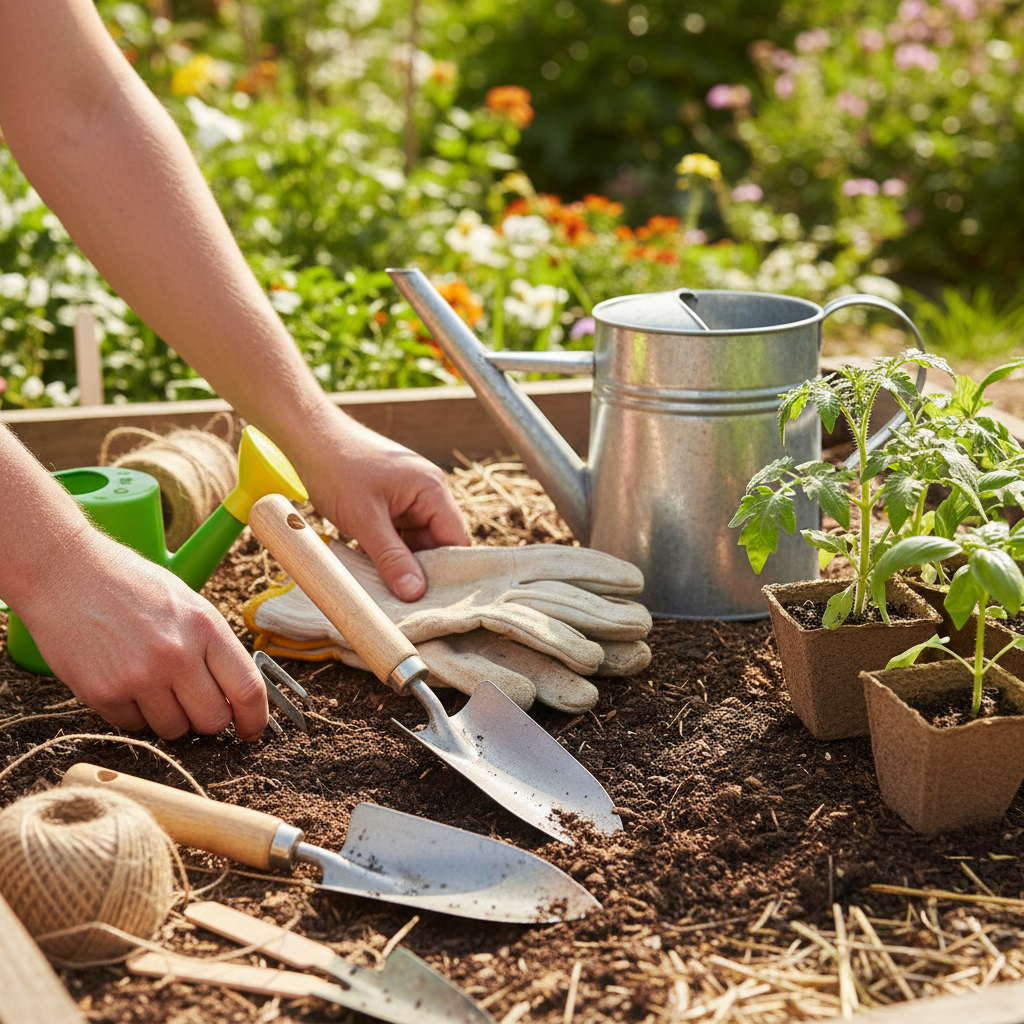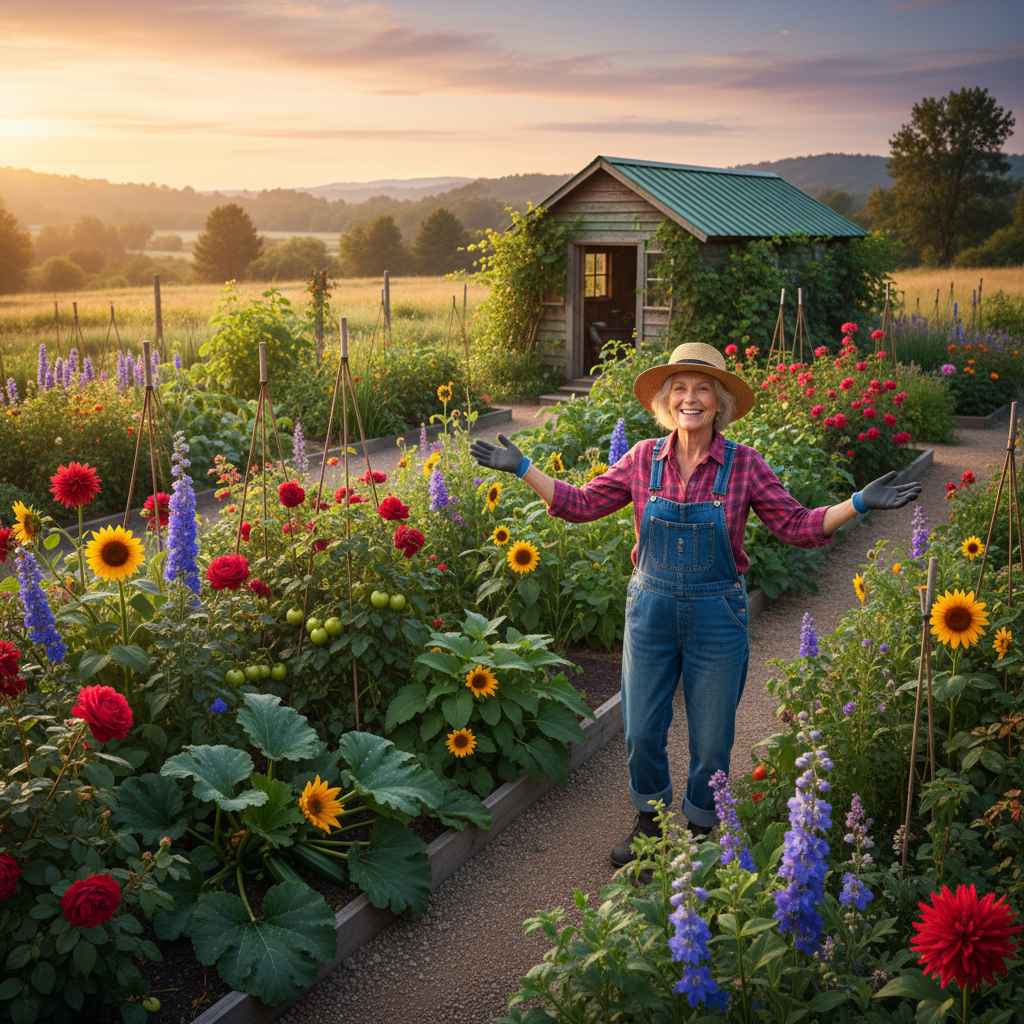
Table of Contents
Introduction
Starting a garden can be an exhilarating adventure filled with hope, wonder, and the promise of watching tiny seeds transform into thriving plants. Yet, this journey often feels daunting for beginners stepping into the world of gardening for the first time. How do you know where to begin, what plants to choose, or how to care for your new green companions? These common questions spark both excitement and uncertainty, creating the perfect blend of challenge and reward that gardening offers. Embracing this experience can lead to a fulfilling hobby that connects you with nature while beautifying your surroundings.
Gardening has experienced a significant resurgence in popularity in recent years, with millions across the globe discovering the joys of cultivating their own plants and vegetables. In fact, studies show that home gardening not only improves mental and physical health but also enhances environmental awareness and sustainability. For beginners, this growing interest may seem overwhelming, but understanding its benefits can provide great motivation. Whether you dream of vibrant flowers, fresh herbs, or crisp vegetables, gardening opens a door to a rewarding lifestyle marked by growth, patience, and creativity.
Many new gardeners face challenges such as selecting the right plants, creating suitable growing conditions, and learning effective care routines. These hurdles can sometimes dampen enthusiasm, but they are simply part of the learning process. Gardening teaches resilience and observation skills, as each plant offers unique feedback through its growth patterns and needs. Recognizing these subtle signals can deepen your connection with nature and empower you to develop confident gardening habits over time. This emotional journey often inspires a sense of accomplishment and even mindfulness as you tend to your garden daily.
For anyone starting out, clarity and guidance are essential to overcoming the initial confusion. Understanding soil preparation, sunlight requirements, watering schedules, and essential gardening tools forms the foundation of successful cultivation. With so many factors influencing plant health, beginning with basic principles helps build a strong gardening routine. Moreover, identifying common pests and diseases early enables gardeners to protect their plants naturally, minimizing loss and encouraging sustainability. These beginner steps pave the way for a fruitful and joyful gardening experience.
What You’ll Learn in This Guide
This comprehensive guide is designed to support beginners as they navigate the exciting world of gardening. Throughout the following sections, you’ll find approachable explanations and practical tips that make gardening accessible and enjoyable for everyone. Whether you’re starting with a balcony container or a backyard plot, the insights provided here will equip you with the tools and confidence you need to thrive.
- Understanding the Basics: Learn the fundamental concepts of gardening including soil health, plant types, and climate considerations to set a solid foundation for your green journey.
- Choosing the Right Plants: Discover easy-to-grow plants that suit beginners, including vegetables, herbs, flowers, and indoor options tailored for different environments and skill levels.
- Preparing Your Garden Space: Explore practical steps to ready your soil, position your plants for optimal sunlight, and establish watering routines that meet your garden’s unique needs.
- Common Challenges and Solutions: Identify typical beginner hurdles such as pests, diseases, and weeds, alongside natural and effective methods to overcome these obstacles with confidence.
As we explore these topics, you’ll gain a clear roadmap to starting and nurturing your garden successfully. From understanding the essential gardening tools to recognizing when expert advice is needed, this guide covers all the bases for beginners. Each section is crafted to build your knowledge step by step, ensuring that you feel supported throughout your gardening journey. By integrating practical advice with encouragement, this guide aims to foster both competence and a deep appreciation for the growth process.
The detailed tips and strategies provided will not only help you avoid common pitfalls but also maximize your enjoyment and results. Whether your goal is to create a lush flower bed or cultivate fresh produce, having a thoughtful plan enhances your chances of success. Gardening is more than just a hobby; it’s a way to cultivate a healthier, happier lifestyle with tangible rewards. As you progress, you’ll find that each new sprout and bloom becomes a testament to your care and patience.
Prepare to embark on a fulfilling green journey filled with learning, discovery, and satisfaction. With a little preparation and the right knowledge, anyone can grow a garden that brings joy and beauty into their life. Let’s begin this adventure together, turning soil and planting seeds toward a vibrant future full of growth and abundance.

Starting your gardening journey is an exciting adventure filled with the promise of fresh blooms, vibrant vegetables, and the joy of being close to nature. However, for beginners, it can also feel overwhelming with so many decisions to make and information to absorb. It’s important to approach gardening step-by-step, focusing first on fundamental aspects such as choosing the right plants and preparing your garden space properly. By understanding these key elements, you can set yourself up for success and enjoy the rewarding experience of seeing your efforts flourish. This discussion dives deeper into these foundational topics to help you move confidently from planning to planting.
Choosing the Right Plants for Beginners
Selecting the right plants is one of the most critical decisions for beginner gardeners because it directly impacts how successful and enjoyable your gardening experience will be. Since gardening involves biological processes that are influenced by climate, soil, and available space, beginners should prioritize plants that are easy to care for and well-suited to their environment. This reduces frustration and increases the likelihood of healthy growth. Starting with manageable, resilient plants helps build your gardening knowledge and confidence over time.
It is also essential to consider your garden’s location when choosing plants. The amount of sunlight, temperature fluctuations, and seasonal weather patterns will all affect what plants thrive in your space. Additionally, the size of your garden – whether it’s a small balcony or a large backyard – will determine whether you can grow sprawling vegetables or should focus on compact indoor plants. Understanding these factors early on allows you to select plant varieties that match your conditions, making maintenance easier and more fulfilling.
Key Aspects of Choosing the Right Plants for Beginners
When deciding what to plant, keep these important tips in mind to ensure a smooth start to your gardening journey:
- Best Plants for Beginners: Opt for annuals and perennials known for minimal care needs, such as marigolds, zinnias, lavender, and sunflowers. Vegetables like lettuce, radishes, basil, and mint also tend to be forgiving. For those with limited outdoor space, easy indoor plants such as spider plants, pothos, or snake plants can brighten small areas without requiring extensive effort.
- Understanding Plant Zones and Climate: Check your local USDA hardiness zone or equivalent to identify which plants are suitable for your region’s climate. Knowing this helps you avoid planting species that will struggle during your winters or summers. For example, a cold-hardy plant in a warm region may become stressed, while a tropical plant in a temperate zone might perish without protection.
- Matching Plants to Your Space: Even within your climate zone, consider how much sunlight your garden receives. Some plants thrive in full sun, while others prefer shade. Matching plants’ sunlight and water preferences to your garden conditions will encourage optimal growth and reduce maintenance challenges.
- Starting Small and Simple: Begin your garden with a few easy-to-grow species to build your skills and observe how different plants respond to your care. As you gain experience, you can experiment with more complex or delicate varieties.
Preparing Your Garden Space
Once you’ve selected your plants, creating the right environment for them to grow is the next crucial step. A well-prepared garden space provides the essential nutrients, water, and light that plants need to thrive. This involves improving soil quality, positioning your garden strategically for sunlight, and establishing proper watering routines. Thoughtful preparation helps prevent common gardening issues and lays the foundation for sustained plant health.
Preparing your garden is not just about physical setup; it’s also about understanding each plant’s needs and creating conditions that meet those needs consistently. Attention to detail during this phase can make a significant difference in your garden’s productivity and your enjoyment. Whether starting a small plot or containers on a balcony, these strategies ensure your plants have the best chance of flourishing.
Important Considerations for Preparing Your Garden Space
Focus on these key aspects when preparing your garden to set the stage for thriving plants:
- Soil Preparation: Test your soil’s pH and nutrient content using inexpensive kits available at garden centers. Based on results, you can amend the soil to improve fertility by adding compost, well-rotted manure, or organic matter. Good soil structure supports root growth and enhances water retention while preventing drainage problems.
- Adding Compost and Organic Matter: Incorporating compost enriches soil with essential nutrients and beneficial microorganisms. It also improves soil texture and helps retain moisture, reducing the need for frequent watering. Regularly refreshing your soil with organic matter fosters a healthy growing environment.
- Sunlight Positioning: Observe how sun moves through your garden to identify the areas that receive full, partial, or shade sun throughout the day. Arrange sun-loving plants in the brightest spots and place shade-preferring species where they can avoid harsh afternoon sunlight. Strategic positioning makes a big difference in plant health and growth rate.
- Establishing a Watering Routine: Creating a consistent watering schedule that matches your plants’ needs is vital. Most plants do well with deep, less frequent watering rather than shallow, frequent watering which can promote weak roots. Consider early morning or late afternoon watering to reduce evaporation and water stress.

Conclusion
Embarking on your gardening journey as a beginner can be both exciting and rewarding, provided you arm yourself with the right knowledge and preparation. Throughout this guide, we’ve covered crucial gardening basics that form the foundation for a thriving garden. Starting with choosing the right plants that match your local climate and gardening space ensures your efforts are met with growth and success rather than frustration. Easy-to-grow annuals, perennials, vegetables, herbs, and indoor plants all offer beginner-friendly options that cultivate confidence and enjoyment.
Preparing your garden space properly is just as essential. Understanding how to test and improve your soil, positioning plants for optimal sunlight exposure, and establishing a consistent watering schedule are the pillars that support healthy plant development. Equipping yourself with the right gardening tools simplifies tasks, making the process more enjoyable and efficient, whether you’re tending to a small balcony or a sprawling backyard.
Gardening challenges such as pests, diseases, and weeds are common obstacles but can be effectively managed once you recognize early signs and apply organic, sustainable methods. Knowing when to seek expert advice from local extension services or professional gardeners ensures that you don’t feel isolated in this learning process and helps you overcome more complex issues with confidence.
To take actionable next steps, start by assessing your available space and climate to select the most suitable plants. Then, focus on soil preparation by testing pH and nutrient levels and enriching your soil with compost and organic matter. Position your plants where they can soak in ideal sunlight, typically around six hours per day, and establish a watering routine that fits your plant types and weather conditions. Equip yourself with essential tools such as gloves, trowels, pruners, and watering cans to make planting and maintenance easier. Stay vigilant against pests and weeds by regularly inspecting your garden and employing natural control strategies like companion planting and manual removal. Finally, don’t hesitate to consult with gardening experts when you encounter recurring or unclear problems to refine your techniques and boost plant health.
The journey of gardening is as much about patience, observation, and learning as it is about growing plants. Every seed planted and every garden mishap encountered offers valuable lessons that enhance your green thumb over time. Embrace this process with enthusiasm and kindness toward yourself. With steady practice and care, your garden will flourish, bringing not only beauty but also a profound sense of well-being and accomplishment. Remember, gardening is more than a hobby; it’s a rewarding lifestyle that nurtures both the earth and the gardener.
As you continue cultivating your green journey, keep learning and experimenting to develop a garden that reflects your passion and personality. Celebrate every bloom and harvest, knowing you’ve created a nourishing oasis that benefits you and the environment. Happy gardening!
Frequently Asked Questions
-
What are the easiest plants for beginner gardeners?
- Marigolds, basil, and lettuce are excellent low-maintenance plants perfect for beginners, providing quick growth and success.
-
How often should I water my garden?
- Watering once or twice a week usually suffices but adjust based on your plant types and local weather conditions for best results.
-
Do I need to use fertilizers as a beginner?
- Balanced fertilizers can help support plant growth; start with small amounts and follow instructions to avoid overfeeding.
-
How can I prevent pests without chemicals?
- Use natural predators, companion planting, and organic repellents to maintain a healthy, chemical-free garden environment.
-
When is the best time to start gardening?
- Spring is generally ideal for planting, though timing depends on your climate and specific plant requirements.
